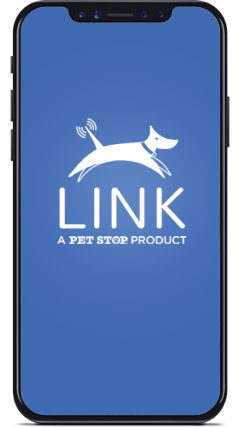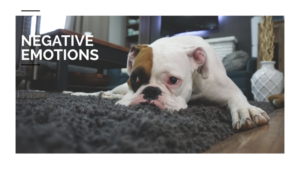Preventing Dog
Aggression
Your new puppy is home, and your family is absolutely in love. While on the outside you are clearly the hero of the family, on the inside you are a little uneasy. What if the new furbaby snaps at your toddler? What if it nips your kindergartner and he needs stitches? What if it nips your neighbor’s kindergartner-will your insurance cover it? What if you got the most aggressive pup in the litter? Did I make the right choice for my family? Am I now burdened with a problem dog?
Hold on, and breathe. Don’t start second-guessing this big decision. Dogs are capable of showing aggression and acting out on occasion. It doesn’t mean you picked the “wrong” dog for your family, putting them in harm’s way.
Aggressive actions, ranging from growling to biting, are reactions to one of two things 1) your dog’s fears or 2) your dog’s frustrations. The secret to preventing aggressive behaviors in your dog stems from replacing these two negative emotional states with two positive emotional states: play and curiosity.[1] Sound like a plan? Good! Let’s go!
Learning to manage your dog’s fears and frustrations will go a long way in creating the healthy, loving, long-term relationship you desire. Many dog owners are not doing the bare minimum to help cultivate this behavior, as evidenced by the 3.3 million companion dogs turned into shelters last year.[2] The majority of dogs were surrendered due to fixable behavioral issues, such as aggression. This statistic could be greatly reduced if owners took the time to research and implement strategies for their pets’ needs.
So, congratulations on coming here to learn more about how to help your pet live up to the lofty and noble title of “Man’s Best Friend!” We will discuss the five main emotions of your dog: curiosity, play, fear, frustration, and panic. They make up just two groups: positive emotions (curiosity and play,) and negative emotions (fear, frustration, and panic.) Rest assured that your new dog can and will learn to behave appropriately and form a rewarding attachment to your family. Cultivating daily and weekly routines will provide the emotional structure to thrive in everyday situations.
The first positive emotion to discuss is curiosity. It is the master emotion, born of a comfort and confidence in one’s surroundings that prompt us to go out and explore. It is an emotion based in hope, not dread. What else is out there? Is it even better than what is in front of me right now? What other fun stuff exists? Where is it? How will I find it?
The second positive emotion is play. When you went about selecting your new puppy, his playfulness was no doubt a huge deal-maker. We pursue pets that will interact with us in overwhelmingly positive ways. Playing connects us to each other in the most rewarding way. A playful pet is a happy pet, comfortable in his surroundings. Playing leading to some tears and a few innocent nips? Not to worry- you are on the right path to a marvelous friendship.
Now to the negative, stressful emotions. The first of these is fear. Animal behaviorists have studied the body language of fear in dogs, and a good read on the subject is Modern Dog Parenting, by Sarah Hodgson.[3] The fear response can be triggered by the unknown: an unfamiliar sound, a change in schedule, a strange sight. The dog will refuse food, become withdrawn and start to shut down. If the fearful situation or thing remains unresolved, the dog may start to display aggressive behaviors.
While some breeds of dog can tolerate tension and defensiveness better than others, and still function well as the family pet, it truly doesn’t have to be this way. You are the key to helping your pet shift his experience away from fear and into fun!
The second negative emotion, frustration, is easier to discern. Throughout their day, dogs encounter multiple frustrations: wanting to play, go outside, eat that food that is juuust out of reach, jump up on the couch, jump on the neighbor, etc. While the experience of occasional frustration is, well, life, constant and relentless frustration will produce undesirable, aggressive behaviors. Aggression becomes the only outlet to manage this negativity.
Finally, there is panic. Early initial experiences with panic occur when puppies are younger than twelve weeks old. They find themselves in situations where they may feel alone, isolated or threatened by unfamiliar sights and sounds (like Fourth of July fireworks, or a storm.) Panic and panicky emotions can persist throughout a dog’s life UNLESS he is given the positive support that can mitigate these feelings.
Now that you are familiar with the roadmap of your dog’s main emotional centers, what to do? How do you leverage the two positive emotions to tamp down on fear, frustration and, ultimately, aggression? Try the following suggestions:
Look for reasons to reward your dog and shower him with treats and affection. Don’t be a stickler for lockstep obedience; instead, create a fun environment that requires both of you to participate. Games such as fetch and frisbee are great, but have you tried bubbles, hiding toys, and even doggie soccer? [4]
Play these games away from crowds and noise, to help impart this new conditioning. As he catches on, play in more distracting environment.
Monitor your dog’s attitude, temperament and behavior closely. Are you seeing a more content, calmer, happier pet? Wonderful! You are now a valued member of his pack, and dogs are happier when they have a trusty companion.
Ok, it’s showtime. A situation has arisen, and your pup is getting agitated and showing some signs of frustration. You are now going to distract the dog by first NOT yelling at or scolding him, moving away from the scene, and engage him in a little play. By not piling on to his already-mounting frustration, you are defusing the stress and setting the scene for a happier, better-trained pet.
Inside every “aggressive” dog is a potential companion for life! Don’t let a little growling and nipping discourage you from a wonderful cross-species friendship. Let play and curiosity rule your home, and everyone will be the happier for it!
[1] http://www.quickanddirtytips.com/pets/dogs/how-to-prevent-aggression-in-your-new-dog-or-puppy
[2] https://www.aspca.org/animal-homelessness/shelter-intake-and-surrender/pet-statistics
[3] https://www.amazon.com/Modern-Dog-Parenting-Raising-Loving/dp/1250095549/ref=sr_1_1?s=books&ie=UTF8&qid=1496773814&sr=1-1&keywords=modern+dog+parenting
[4] http://www.vetstreet.com/our-pet-experts/beyond-fetch-fun-games-you-can-play-with-your-dog
 Pet Stop
Pet Stop Get a Free Quote
Connect with Your Local Pet Safety Experts at Pet Stop. Visit, call, or
chat with us – we’re here to help you create the ultimate safe haven for your pet.
Get a Free quote
Name *
Zip code where new fence is required *
What breed is your dog?
Preferred contact method *
Phone Number to Call/Text *
Address *
Stay Connected, Stay in Control
Brief introduction to the OT-300, highlighting remote control, real-time notifications, and easy setup through the Pet Stop Link App.
Download the App


